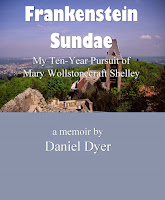I was wrong.
Once again.
As I began
reading through all the Lives, I very
quickly began to notice something: In the lives of her subjects Mary was, from
time to time, highlighting experiences that in one fashion or another
paralleled her own. Someone once wrote that biography is as much about the
biographer as the subject. I’ve read lots of biographies, and I believe I agree
with that old bromide—or keen insight, depending on your attitude and
experience!
How about a
few examples …?
• Of
Petrarch, she writes: He believed that
travelling was the best school for learning.[1] Well, this is
certainly a belief that Mary shared with Petrarch (1304–1374), the Italian poet
who popularized what has become known as the “Petrarchan sonnet”—a
fourteen-line poem, iambic pentameter, usually with the following rhyme scheme:
abbaabba cdecde.
Travel had
long been important for Mary—as we’ve seen throughout this account. She loved
her mother’s book about her travels in Scandanavia, and, of course, her 1814
elopement with Bysshe Shelley took her through France and Switzerland. The
summer of 1816—the famous Frankenstein Summer—took her and Bysshe again to
Switzerland (where she would later set some key scenes in Frankenstein). Later—following
her marriage on December 30, 1816—she and Bysshe, in March 1818, traveled to
Italy, moving up and down the boot like a shine cloth before his drowning in
the summer of 1822 ended Mary’s European sojourn.
But just for
a while. As we will see in the ensuing pages, in the 1840s she took another
extensive and extended trip to Europe—and wrote a book about it. So … travel to
Mary was a trigger for her imagination. As it has been for countless writers
throughout literary history. (But there are writers, as we know—great ones,
like Emily Dickinson—for whom travel was an unnecessary trigger.)
[1] Lives of the Most Eminent Literary and Scientific Men of Italy, Spain,
Portugal, vol. 2 (London: Longman Rees, Orme, Brown, Green & Longman;
John Taylor, 1835), 73.


No comments:
Post a Comment